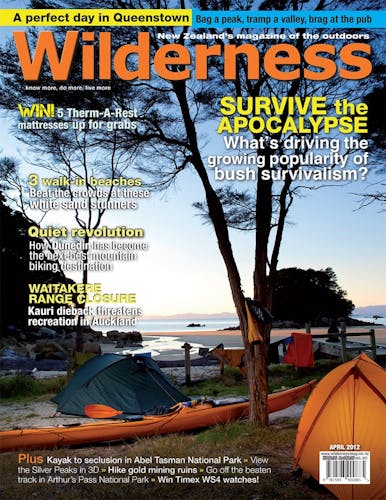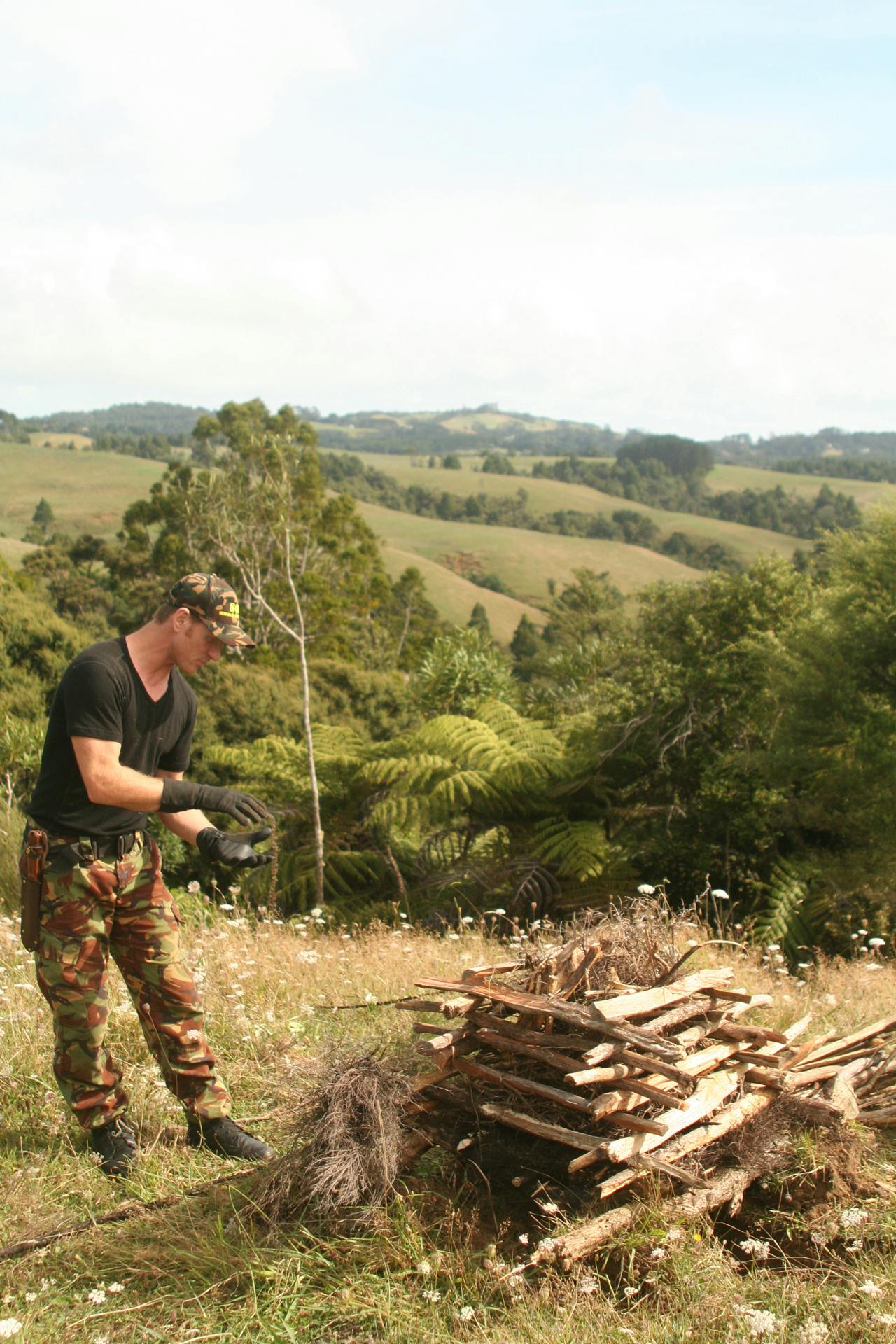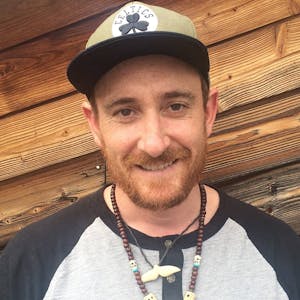Learning the skills of bush survival is spawning a new form of outdoor recreation discovers Josh Gale
Growing up in the African desert, Ryan Hunt was stung by scorpions, bitten by spiders and narrowly avoided poisonous snakes.
When a scorpion stung him when he was eight-years-old, his father knew exactly what to do; shock the wound repeatedly with a pig prodder.
“I don’t think there’s much scientific evidence for it, but anecdotally it works well,” says Hunt, now 24 and living in Auckland. Hunt was born in New Zealand, but when he was four his parents moved to the Turkana district of northern Kenya to serve as missionaries, his father building houses and wells, his mother, a nurse, running a free health clinic.
Looking back on his six years there, Hunt feels nostalgic about the simple life, the Kenyan friends and the experiences he enjoyed that made him who he is today.
“The world was just one big sandbox for me,” he says. “I’d go roaming with my friends along the river or chasing monkeys. It was a Jungle Boy life.
“We’d go out for the whole day with just a water bottle and sometimes not even that, no backpacks, PLBs or water purification tablets and instead we’d use what we found around us.
“It lit a spark in me that’s grown into a love of the outdoors.”
Hunt, who’s just finished a Master’s thesis in clinical audiology and now makes a living from peering into earholes, returned to New Zealand when he was 11.
But his experiences in the Kenyan savannah stayed with him and eventually grew into a fascination with bushcraft, which he calls an “umbrella term” for a vast array of skills including firecraft, survivalism, knowledge of edible and medicinal plants, natural shelter building and tracking and hunting.
But it also involves much more than this, and veers towards a boyish and a quixotic wonder with exotic primitive skills such as bowcraft; the craft of making bows and arrows with a knife, your bare hands and what you can rustle up in the woods.
After researching these and other ancestral crafts on US and UK websites, Hunt discovered there were no corresponding websites in New Zealand so he decided to start his own.
He’s the founder and owner of bushcraft.org.nz; an online community that aims to share knowledge and skills on bushcraft, survivalism and primitivism.
Around the world, bushcraft-survival is a growing form of recreation and Hunt says it’s the same in New Zealand.
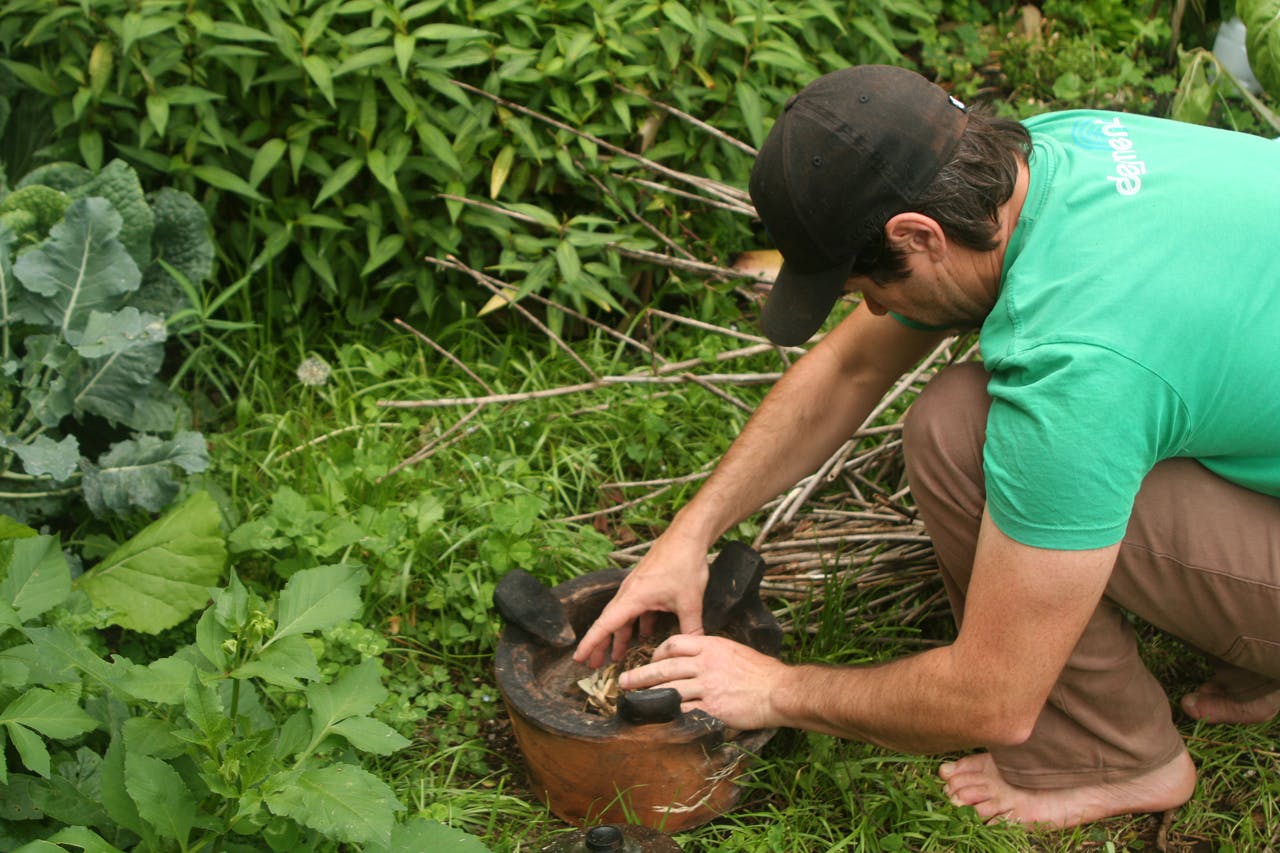
Photo: Josh Gale
For Hunt, the explanation that gets to the heart of why he and many of his website’s members are passionate about bushcraft is one word: “self-sufficiency” – which means, in part, being prepared for any scenario.
Hidden behind clothes in his wardrobe, for example, Hunt keeps his ‘go bag’ which contains his passport, cash and long list of survival items to sustain him in the event of a natural disaster or some other calamity.
“A certain segment of the bushcraft community will always have ideas about what might happen if the world as we know it and our social structures came crashing down and we face a survival situation,” Hunt says. “The life we have in the city is only feasible because of all the behind the scenes stuff – the distribution of food, electricity, running water – but once that falls apart it’s a pretty miserable place to be.”
For survivalists, it’s better to head for the hills than remain in the city to fight it out with marauding gangs. Hence the need to understand not only how to survive in the bush, but how to be comfortable in it.
Doomsday, Mayan and Nostradamus prophecies, however, don’t motivate Hunt who says fear and preparation for the unending apocalyptic predictions have a greater following in the US where movies like 2012 and CGI-enhanced films usually emerge from.
“It might not be Armageddon or a nuclear holocaust scenario you have to face, it could just be a natural disaster like the earthquake that struck Canterbury,” Hunt says.
After practising his bushcraft skills for a period of months, Hunt eventually tested his mettle by going on a solo three day trip in the Bethells Beach area with nothing but a knife, a book about edible plants and a large kumara.
He foraged for plants and discovered it was much harder and less satisfying than he expected. Desiring something more substantial, he tried fishing and caught a few sprats which he cooked on a rock and found equally disappointing. The kumara, it turned out, won the prize for meal of the trip.
Learning which foods to eat and undertaking an American Indian-style rites-of-passage adventure seem to be important aspect of the bushcrafter’s journey.
Otaki-based bushcraft and wild-living teacher Steve Porteous knows a thing or two about these rites of passage experiences. He’s had many, does them regularly and is planning more. These experiences, he believes, make us stronger and more capable.
To learn to be comfortable in the wilderness, Porteous is willing to experiment in many unusual ways. Last winter, for example, he stripped naked and walked into the snow to see how his body would respond. He regularly goes into a small area of bush for three days with just the clothes on his back and a knife.
He also knows how to have a hearty meal in the bush. Recently, Porteous, his wife Jen and two kids had fried cicadas for lunch.
“They were good, but when you cook them you’ve got to watch they don’t burn,” says Porteous. “In Thailand every man and his dog knows how to eat bugs. Here in New Zealand we don’t, we fear it because it’s a cultural taboo.”
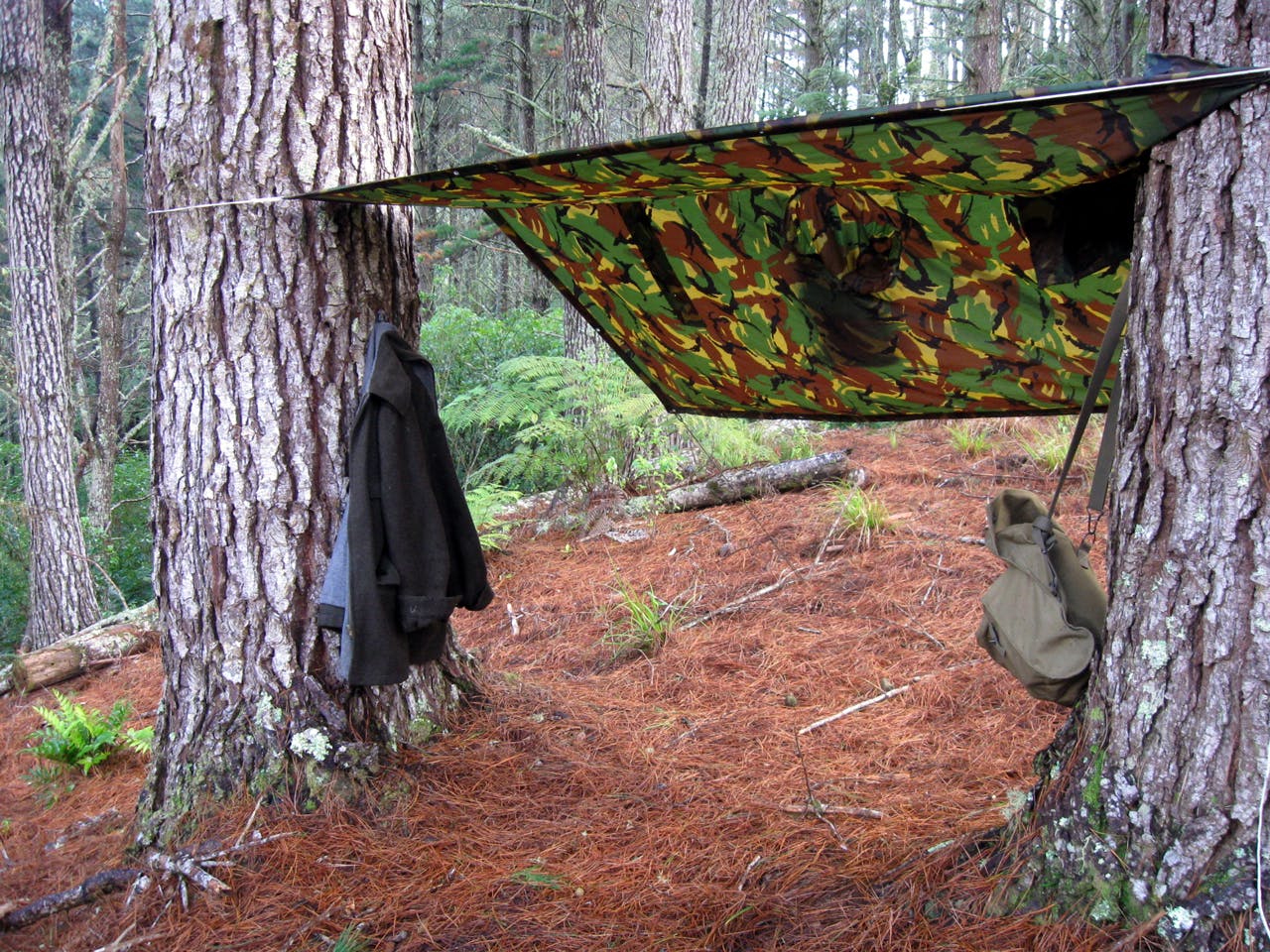
Josh built a shelter with a fire an arm’s distance away. Photo: Josh Gale
Breaking taboos and social expectations of work and lifestyle is an everyday occurrence for Porteous.
He and his family live off-the-grid in a Skyline garage on a four acre property close to Otaki River. Here, and in other parts of the North Island, Porteous, who worked in the outdoor adventure industry for 14 years, runs bushcraft-survival, wild food and nature awareness classes.
Similar to Hunt with his search for self-sufficiency, Porteous and many of the people who attend his classes are interested in bushcraft to become more “self-reliant”.
While he says the occasional end-is-nigh alarmist does surface, most of his students are seeking a deeper connection with nature, rather than a masterplan to ride out the apocalypse.
Many come from tramping backgrounds and are seeking a slower, more immersive experience than the typical brisk walk in the park and also the know-how to survive if misfortune strikes on one of their trips.
“Everyone that comes to a class is always so grateful just to have slowed down,” Porteous says. “It’s the connection with themselves, each other and nature people are looking for.”
Porteous left the outdoor adventure industry because he wanted to move away from the adrenaline of “ropes, boats and bikes” toward a more sustainable life lived close to nature. “That industry doesn’t connect people, it feeds us adrenaline,” he says. “It’s not about a connection and it’s not about knowing, it’s all about a quick buzz and then they’re out of there.”
This gets to the heart of what bushcraft is all about and perhaps why it’s a form of recreation growing in popularity and distinct from tramping.
Nonviolent communication trainers Wayne Prince and Deb Hipperson attended two of Porteous’s classes and since then have been practising the skills and new form of awareness they learned.
When I visit them at their home in the Auckland suburb of Mt Albert, I expect the usual cuppa-over-the-table interview.
Instead, Prince takes me to a nearby park to collect fallen branches so we can start a fire in his backyard.
When we get back, the couple prepare tinder and Hipperson sets it alight with a flint and striker in one go. Prince boils a billy and we sit on the grass drinking tea and talking.
They explain since doing the course with Porteous, they’ve been going out to a spot in the Hunua Ranges and each trip taking a little less with them.
On their next trip they’re planning to leave the tent and their sleeping bags at home and instead build a debris shelter and stay warm with a small fire.
Prince is planning other gear-less adventures on Auckland’s west coast to build up for a men-only rites-of passage-journey with Porteous and two others – a four day journey from Masterton to Otaki across the Tararua Range with only a knife and their clothes.
“After doing Steve’s classes, we have a different purpose and awareness now when we go into nature,” Prince says. “It’s not about destination anymore; it’s more about what we notice along the way, where we can build a shelter and where we can get water.
“It used to be about going from A to B, but now we tend to visit the same spots rather than going to lots of different places so we get an experience of how the seasons change the bush.”
Bushcrafters prefer going to the same spot often to learn about the resources nature provides and to test their skills, rather than bagging as many huts, peaks and walks as possible.
Prince agrees threats to the global order, such as pandemics and the possibility of industrial society running out of oil, are good reasons to learn about bushcraft and survival. “But even if they weren’t issues I’d still be doing this,” he says. “It’s more about slowing down and just being connected with what’s around us.”
The slowness and usefulness of bushcraft struck a chord with me so I decided to do a 24 hour bush survival course with Royal New Zealand Air Force survival trainer 39-year-old Stu Gilbert.
Gilbert has been instructing air force and navy pilots in bush survival for more than 10 years. He’s done survival training in alpine environments, in the jungles of Samoa and East Timor and in the Australian desert.
The fit, muscular trainer has encyclopaedic knowledge of the bush and the art of survival and can talk about it with a passion for hours. He’s now in the process of leaving the air force and is starting his own bush survival training company.
Gilbert takes me into a slice of native bush on private land in west Auckland where he runs his courses. We sit under an opened parachute tied to trees as he explains the basics of survival and why he loves being in the bush.
“Going into bush allows people to escape the big cities of dreams and experience what we call survival, but our ancestors’ called it living,” Gilbert says. “The bush provides a supermarket of resources which allow us to practise shelter construction, making fire, finding water and food.
“I enjoy seeing people grow in confidence as they develop these new found skills and start to view everything in the bush as a potential survival resource.”
My mission is simple: survive a night in the bush with nothing but my clothes, a knife and a flint striker.
To complete my mission, Gilbert shows me the two most important skills of bush survival: how to stay warm and how to get rescued.
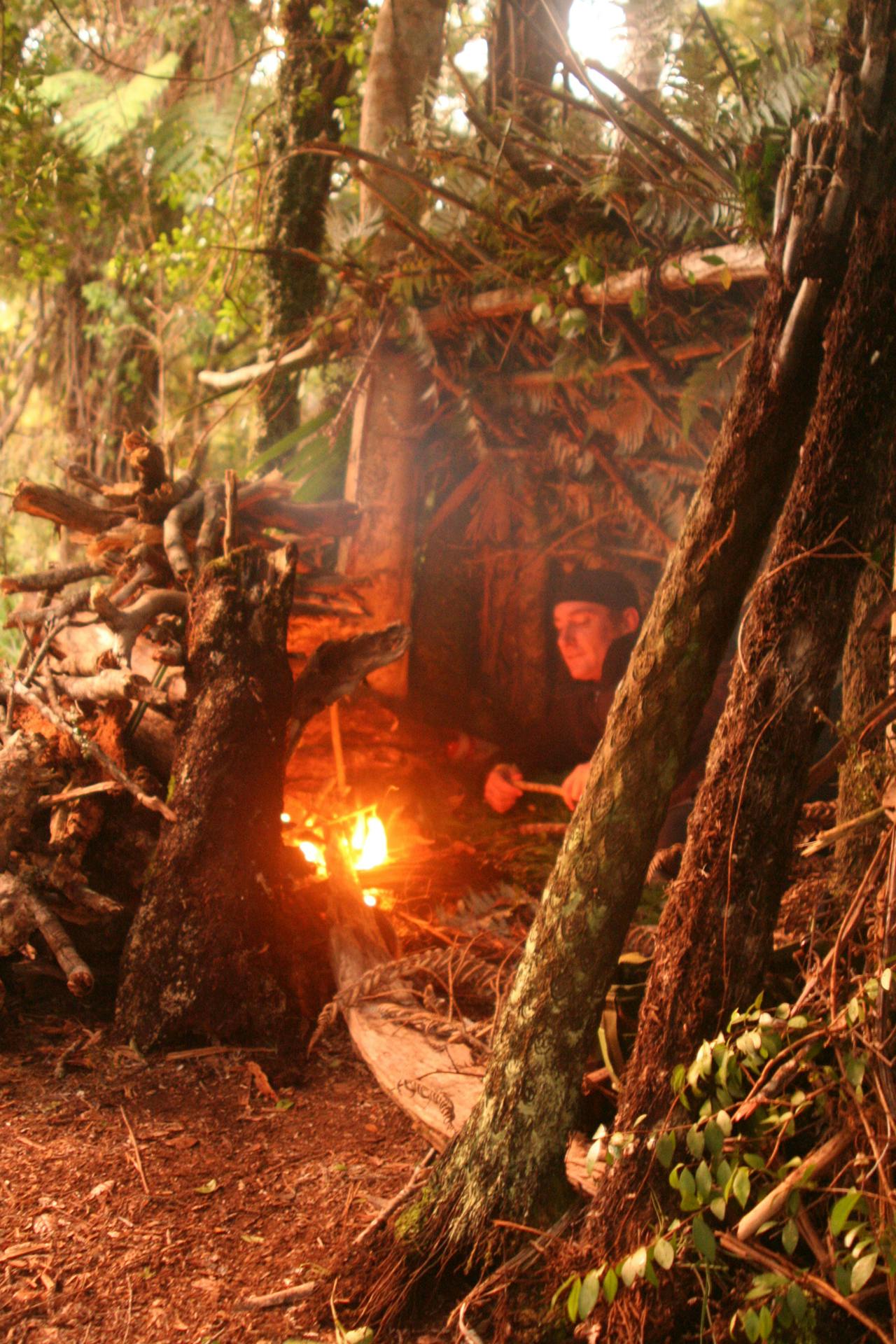
Photo: Josh Gale
Building a shelter not only provides protection from the elements and warmth, it also provides a sense of home, explains Gilbert, which is an important psychological advantage in a real survival situation.
With his help, I spend four hours building a lean-to out of deadfall and ferns. This lean-to even has a fire screen to reflect warmth from the fire back on to my bed of ferns and a rack to dry wood on.
Then Gilbert runs through all the various types of bush tinder I can use to start a fire. After experimenting with bark, toi toi, rimu needles, dry cutty grass and kauri gum, he pulls out cotton wool dipped in Vaseline and this is clearly the most flammable of them all.
After he shows me how to build a signal fire, I retire to my shelter for the night.
I get the fire going an arm’s length away from my bed so I can feed it through the night.
Slowly the light fades, the birds and cicadas quieten and I’m left alone in a bubble of soft, warm fire light. Smoke occasionally blows into my eyes, pricking tears and forcing me to clamp them shut until it passes. Moreporks call out around me and in the distance I hear the cat-like cries of wild peacocks.
I feel uncomfortably exposed to the night time forest, but as the fire flickers before me and a gentle breeze whispers a lullaby through the trees, I relax and feel soothed.
As I settle in, I turn on my headtorch and try to read James Joyce’s Dubliners, but soon give up and give in to just listening to the sounds of the bush.
I contemplate that thousands of years ago my ancestors might have lived in a shelter like this and enjoyed hearing similar noises.
I hear a scuttling sound and switch on my torch to find a large weta crawling towards me. It bolts into the back of my shelter and disappears behind the ferns.
I lie down wearily, but grateful New Zealand has no poisonous or dangerous creatures like the scorpion that stung Ryan Hunt.
In the morning, after a decent night’s sleep, I stink of smoke and have a few mosquito bites, but I feel refreshed from being immersed in the bush and proud to have survived a night with only a fire to keep me warm.
Now I know I can escape to the hills if the world goes belly up or, less dramatically, if I just feel like slowing down.





